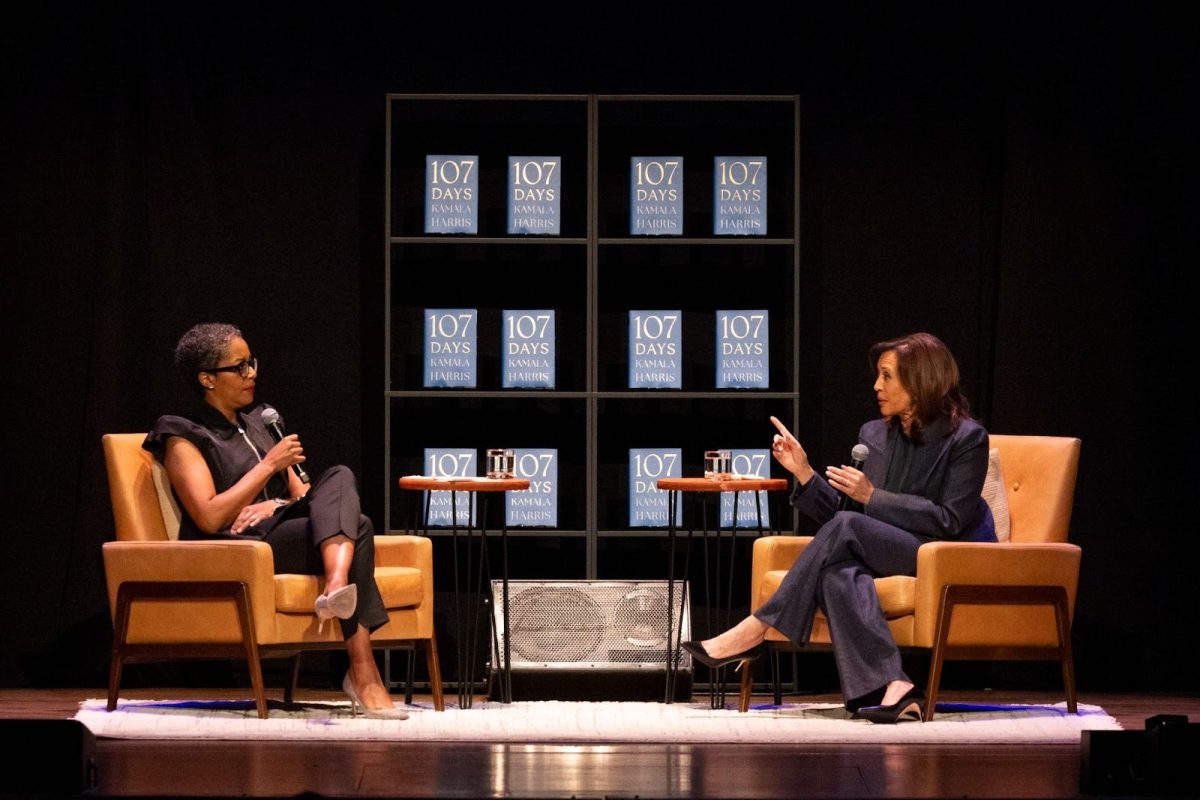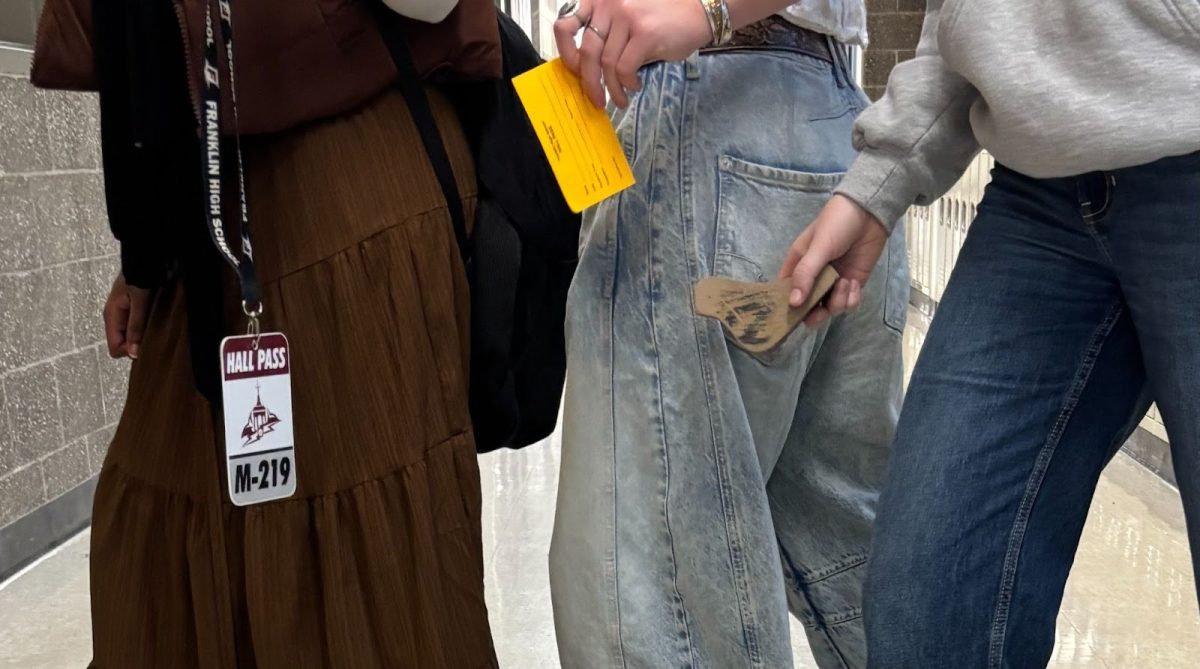Most people are used to seeing an influx of activism from brands during months dedicated to a marginalized group. Just see the flood of posts declaring how a company with a largely white, cisgender, male board stands with people of color and women. And sure, did they donate thousands of dollars to anti-gay and anti-trans politicians? Yes! But that doesn’t mean they can’t support queer people in their own unique, superficial ways.
During pride month in June, social media feeds might see a variety of corporate accounts — now with profile pictures bearing the brand logo overlaid with a pride flag — announcing this year’s lackluster and tacky pride collections. A majority of these brands aren’t using these collections to really help queer organizations or raise awareness for pressing and relevant queer issues — especially anything regarding trans rights — but instead, use it as a chance to make themselves look good.
Take Target, a brand whose pride collections manage to be infamous to both queer people and homophobes. The company reported losing money due to homophobic backlash against Target’s pride collection and people destroyed some of their pride displays. This led to backtracking from Target and they toned down or fully eliminated these displays in more conservative areas rather than, as Dr. Christopher Chávez, professor of advertising at the University of Oregon states, using this to “[ground] their positions.” He also expresses that “[he thinks] how companies react to [backlash] could be really telling; whether they’re willing to truly commit to an issue or whether it’s [just a] convenience.”
Rather than taking this situation as a sign to further stand by this alleged position and use this backlash as an example of why this activism is needed, they took it as a sign to scale back these efforts to appease homophobic customers and not lose sales.
In a landscape where trans people are losing the right to exist in some states and their identities are being violently attacked, Target releasing pride collections of substandard fast-fashion clothing baring luke-warm takes means nearly nothing. They are making a few hundred thousand dollar donations to GLSEN, an organization working to help queer students — which sounds like a large sum, but is pin money to such a large corporation. Especially since that’s the most they are willing to do.
At the same time, it is a more recent development for large brands to even acknowledge pride and paint queer people in a neutral or positive light. In an opinion piece for The Washington Post, Brian Broome writes, “In my youth, I could not have imagined a store selling merchandise celebrating what I had been led to believe was the biggest shame of my life.”
While acknowledgement is important and can be affirming, it must be meaningful and call for real action; it should use their pre-existing resources to do good. It must provide a platform for the voices of marginalized people who otherwise do not have enough of a platform for their voice to reach a large audience. When companies are unwilling to stand by their words, it shows the communities that they claim to stand with that they were never really supported. They were just a convenience and the exact moment they stopped being just that, and these issues and their consequences became too real, their allegiance ended.
Companies can also be incredibly tone-deaf in how they go about their activism. For example, the infamous 2021 Burger King “women belong in the kitchen” tweet during Women’s History Month — this is something that I think about frequently. This tweet was a poorly executed attempt to raise awareness about a lack of female chefs and the company was trying to share their efforts to put more women into professional kitchens. It came across as glaringly offensive and completely inappropriate due to the incredibly sexist history of the phrase and they were promptly — and in my opinion, rightfully — torn apart by the internet. Later, they issued an apology on X (formerly, and widely still known as Twitter), professing they “got their initial tweet wrong and [they’re] sorry.”
While brand activism frequently can come across as unserious and self-serving, it can also be more substantive at times. Marketing Program Director and Associate Professor of Marketing at Oregon State University, Dr. Michelle Barnhart, points to Dick’s Sporting Goods’ response to the Parkland shooting as an example of genuine action from a brand. Following the Parkland shooting, Dick’s Sporting Goods stopped selling the assault-style gun used in the shooting — destroying $5 million of stock rather than allowing another company to sell the product they were taking a stance against. They also ceased selling any guns to people under the age of 21. Barnhart points out that “they communicated and were very transparent about all of this to their audiences.”
Dr. Chávez also points to some diaper brands’ work surrounding infant mortality and outdoor brands like Patagonia or REI’s commitment to the environment as another example of this positive response.
Dr. Barnhart states that “it needs to be consistent with what we in marketing call your ‘brand positioning.’” It’s easier for brands to advocate for an issue that is related to their product because this activism is more likely to resonate with their consumer base, and it’s more likely to come across as authentic — which is important to the public. This work is also simpler to keep up with because it can be seen as relevant to the company and the company seems to have the grounds to speak on the issue. “It has to be for the long haul. If you’re a company, you have to know that [advocacy] is a long-term commitment,” says Dr. Barnhart.
Some argue that it is irrelevant for a company to release statements on social and political issues with little or no relevance to their products; however, consumers are entitled to know what they’re inadvertently funding. Since the heads of these corporations hold power, they can use consumers’ money to fund legislature and organizations potentially going directly against the consumer’s identity or beliefs. It’s normal for a consumer to want transparency to know what their money might be used for.
Additionally, while small gestures on their own might not be much, they might raise opportunities for awareness to be raised on more specific issues. Dr. Chávez points out that “they can prompt larger discussions or motions.”
“If your goal is really to change something in society, you can as a business because businesses have a lot of power, especially in American society. You can make some inroads into changes in society that people see as good,” Dr. Barnhart states.
At the same time, the oversaturation of brands discussing a specific issue can make it hard to differentiate what is, and isn’t real and meaningful. Like when an issue becomes very prevalent, take sustainability for example, now every company feels the need to come across as that, which muddies the waters. Dr. Chávez states that “if everybody’s talking about sustainability, in the same way, it’s hard for consumers to distinguish between things that are meaningful and things that are not meaningful.”
This holds true for many other issues as well because when a brand only starts to speak on an issue and only does so briefly, it can come across as disingenuous and seem like they’re only doing it because everyone else is. It too can confuse customers about what stances from brands are and aren’t meaningful.
Dr. Chávez notes that following the murder of George Floyd, many companies felt compelled to release some sort of statement acknowledging police brutality and racism — for some of these companies, it was possibly for the first time. However, some of these brands were more “pointed” than others. While some brands released more direct statements, others — the majority — “couched it in a general language of people wanting to address equality” and were more “tepid.”
Brands may trivialize tremendously important issues in order to not come across too strongly in order to appease everyone. Dr. Chávez remarks, “in all of these cases this is where brand activism falls short. None of them are calling for specifically police reform or other very specific kinds of legislative issues.” He adds, “Brands could talk about gender equality, but they’re not talking about Roe v. Wade.” If a brand is vague, it is usually noncommittal. This way it can easily backtrack if things get too difficult or if there’s more backlash than expected.
Not only does this backtracking show a lack of genuineness, but Dr. Barnhart also states that a company backtracking from their claims loses them support from both sides. The people who were mad initially can still be upset and the other side can now be mad that they’re backtracking.
It could be argued that brand activism raises awareness for social issues, but overall it waters down legitimate, important, and radical social movements. Brands tend to pick out the most palatable part of a movement — whatever doesn’t disrupt the status quo too much — and use that to their advantage. A brand isn’t willing to say anything meaningful, because it risks alienating some groups of customers.
It’s disappointing because, in theory, these corporations have the power to facilitate real and meaningful change, especially in a society driven by money. One corporation alone might hold more power than thousands, even millions of people. However, encouraging the changes that many individuals are calling for wouldn’t benefit these billion-dollar industries, and as a result they don’t choose to champion change.
Until brands are willing to endorse and push for actual change, their empty claims remain a dystopian reminder that the real issues people face are nothing more than a market for corporations to tap.
That said, brand activism has some potential when it’s not just the hollow shell of a movement and when a brand is willing to stand behind long-term change and take real action, as well as use their resources to platform actual activists. “If brands can support the work that [activists] do, rather than co-opt it, then that’s pretty meaningful,” states Dr. Chávez.
And perhaps the growing visibility of some of these issues says something positive about the direction the world is moving in. “It does seem like it is getting more and more acceptable for businesses to take a stand on things,” shares Dr. Barnhart.
However, in its current state, it tends to be an empty promise. Brand activism, as it is, is not about giving any power to marginalized groups. It’s about selling the illusion of power to individuals who are becoming increasingly disillusioned with the world. It can make self-serving allies feel good about their support of a brand but people hit the hardest by an issue gain nothing from this hollow form of activism.


































